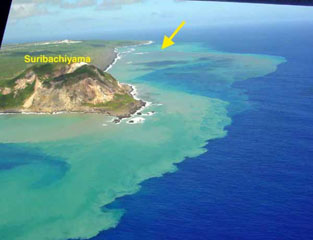Report on Ioto (Japan) — 3 August-9 August 2022
Smithsonian Institution / US Geological Survey
Weekly Volcanic Activity Report, 3 August-9 August 2022
Managing Editor: Sally Sennert.
Please cite this report as:
Global Volcanism Program, 2022. Report on Ioto (Japan) (Sennert, S, ed.). Weekly Volcanic Activity Report, 3 August-9 August 2022. Smithsonian Institution and US Geological Survey.
Ioto
Japan
24.751°N, 141.289°E; summit elev. 169 m
All times are local (unless otherwise noted)
JMA reported that minor eruptive activity off the coast at Ioto (Iwo-jima) had been visible daily during 11-31 July. On 14 July pumice pieces from the eruption washed up onto the shore at Onohama and were photographed during a field survey conducted by the National Research Institute for Earth Science and Disaster Prevention. JMA scientist visited the site on 31 July and confirmed the pumice deposits on the beach. They saw eruptive activity every few minutes, and gray, tephra-laden columns of water being ejected 20-30 m above the ocean’s surface. A satellite image on 4 August showed a small rounded gray zone at the water surface and a plume of discolored water drifting NE.
Geological Summary. Ioto, in the Volcano Islands of Japan, lies within a 9-km-wide submarine caldera. The volcano is also known as Ogasawara-Iojima to distinguish it from several other "Sulfur Island" volcanoes in Japan. The triangular, low-elevation, 8-km-long island narrows toward its SW tip and has produced trachyandesitic and trachytic rocks that are more alkalic than those of other volcanoes in this arc. The island has undergone uplift for at least the past 700 years, accompanying resurgent doming of the caldera; a shoreline landed upon by Captain Cook's surveying crew in 1779 is now 40 m above sea level. The Motoyama plateau on the NE half of the island consists of submarine tuffs overlain by coral deposits and forms the island's high point. Many fumaroles are oriented along a NE-SW zone cutting through Motoyama. Numerous recorded phreatic eruptions, many from vents on the W and NW sides of the island, have accompanied the uplift.

